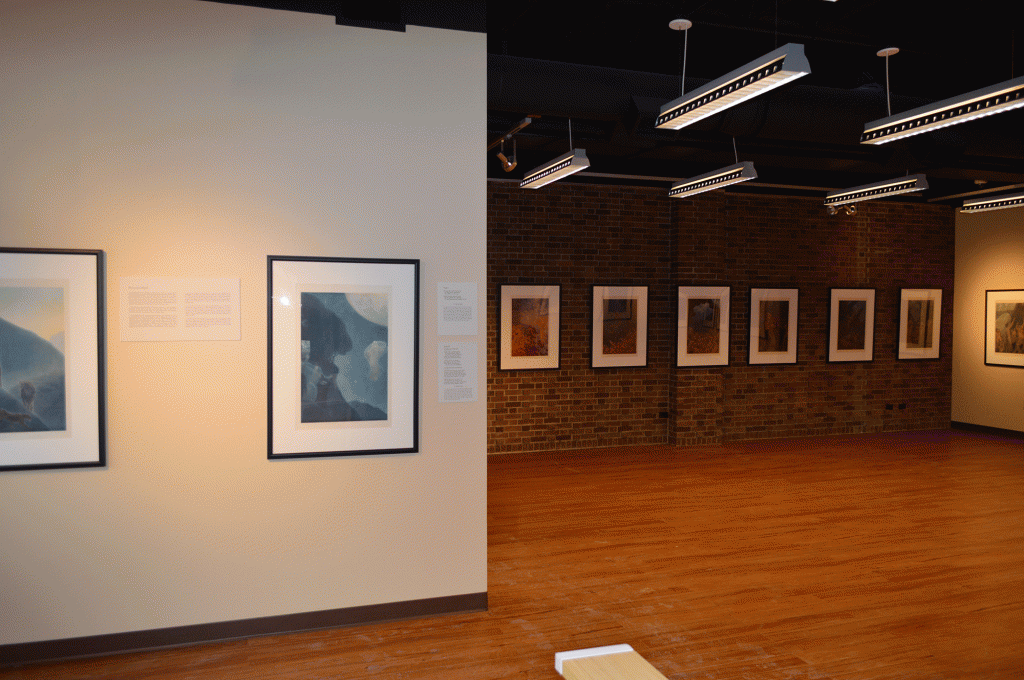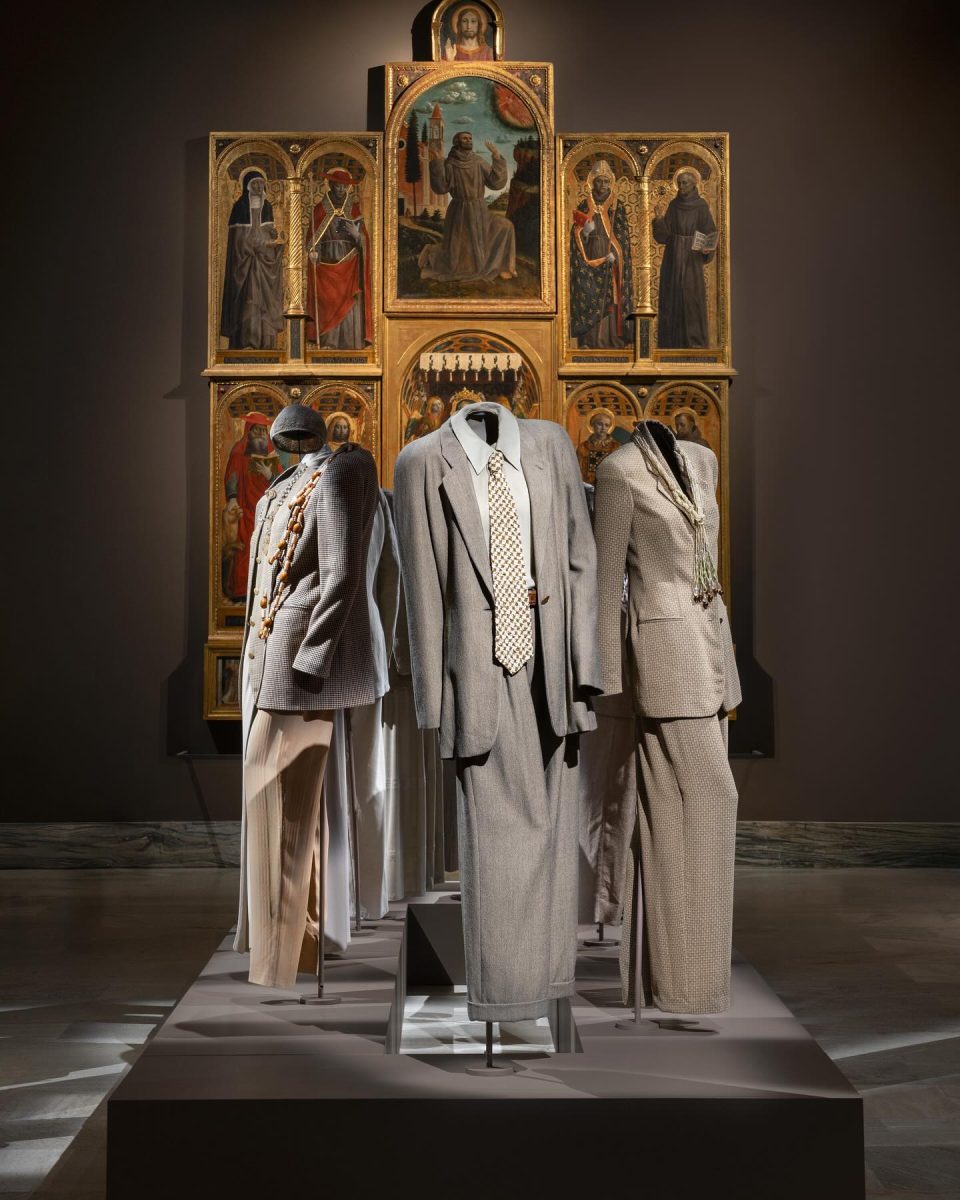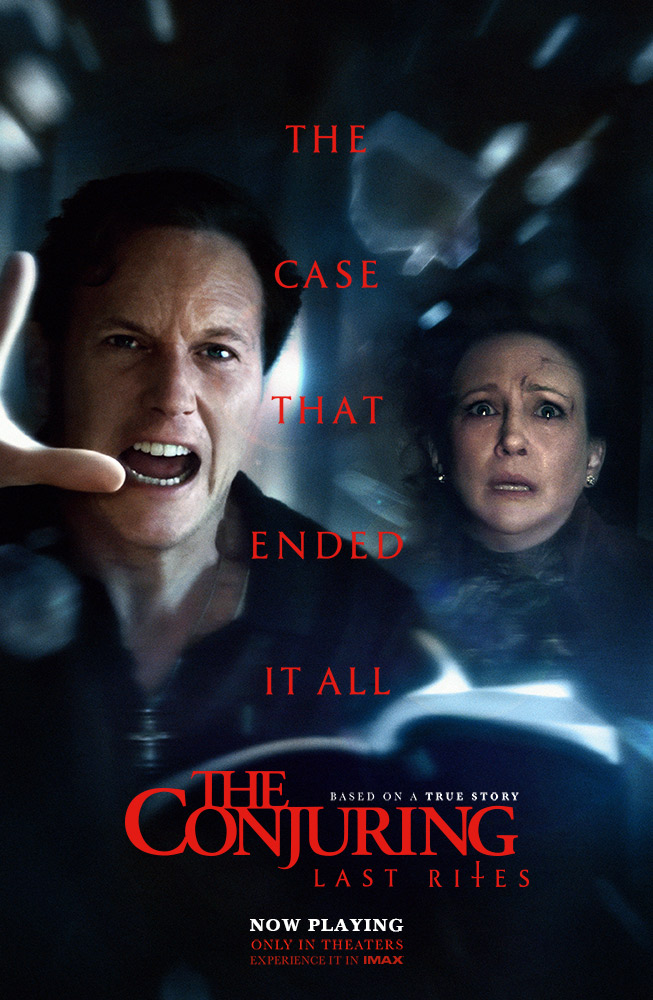Not every style of art can be appreciated, especially when it comes to art that incorporates faith and religion.
After closely examining the pieces in “Dante’s Inferno: The Nattini Illustrations,” currently showing at the Schuster Gallery, and reading the story that goes along with each illustration, I began to value this showcase more and more.
There is so much to look at. Not only is Dante’s “Inferno” a collection of intricate illustrations, it’s a well-developed story.
Each illustration is paired with a poem that describes Dante’s journey through hell. Inferno is one of three canticles – sections – that make up “La Commedia.”
This is truly a blending of the humanities.
Dante Alighieri uses writing, visual art, philosophy and theology among other fields to create this journey into the metaphysical.
I say metaphysical because hell, purgatory and heaven are simply ideas in our mind while we are living.
We can never grasp the true meaning of these places, but Dante brings us one step closer and gives an idea of what these places are like.
Inspired by readings of Homer’s “Iliad,” “Odyssey” and particularly of Virgil’s “Aeneid” – in which Aeneas visits the Underworld – Dante composed his memorable account of his journey through Inferno, Purgatorio and Paradiso.
His reverence for Virgil is reflected in the fact that it is this Latin poet who conducts the tour through Inferno and most of Purgatorio.
Dante’s beloved Beatrice will act as his guide into and through Paradiso.
Other sources of influence included Dante’s knowledge of medieval Catholicism, Aristotelian philosophy, Italian politics and his own vivid imagination. He wrote “La Commedia” in his native Toscano dialect – not Latin – to assure that it would be readily accessible to the common people of Italy.
In a letter to a friend, Dante stated the purpose of his commedia.
“The subject of the whole work, taken merely in its literal sense, is the state of souls after death, considered simply as a fact,” he wrote.
“But if the whole work is understood in its allegorical intention, the subject of it is man, according as, by his deserts and demerits in the use of his free will, he is justly cast open to rewards and punishments.”
The writing has been translated into modern English and is some of the most inspiring and thought-provoking poetry I’ve ever read.
For being written in the early 1300s, this work is very contemporary.
I can’t stop thinking about the poetry and illustrations; they are mesmerizing. Amos Nattini’s work will be hanging in the Schuster Gallery until April 20.
Megan Hamm is a freshman communication arts major and spends a lot of time in the Center for Communication and the Arts where the gallery is located. Hamm calls Dante’s Inferno “an awesome idea for a gallery.
“It’s convenient for me to go because I’m in the SCA all the time. I wish students were more aware of what’s on the first gallery when it opens,” Hamm said.
Lori Steadman is an adjuct instructor in the School of Communication and the Arts and is the gallery’s director.
“I wanted this showcase here more for the students and teachers,” Steadman said. “It’s good for education, good for a religious theme [and] good for Gannon.
“I thought they were very high quality lithographs of the original prints; there is a nice continuity to them.”
The pieces are presented in a visually appealing manner. They are calming.
Yet due to the size of the space, only 18 of the 34 illustrations will be showcased.
There will be a program booklet available, consisting of all the poems for every illustration in “Inferno.”
The images are riveting, and the poetry is inspiring. Dante’s “Inferno” will take you on a journey into your mind.
The Schuster Gallery is located at 700 Peach St. on the first floor of the Center for Communciation and the Arts.
This installment will be available for public viewing during regular gallery hours through April 20.
ROMAN DENISYUK







